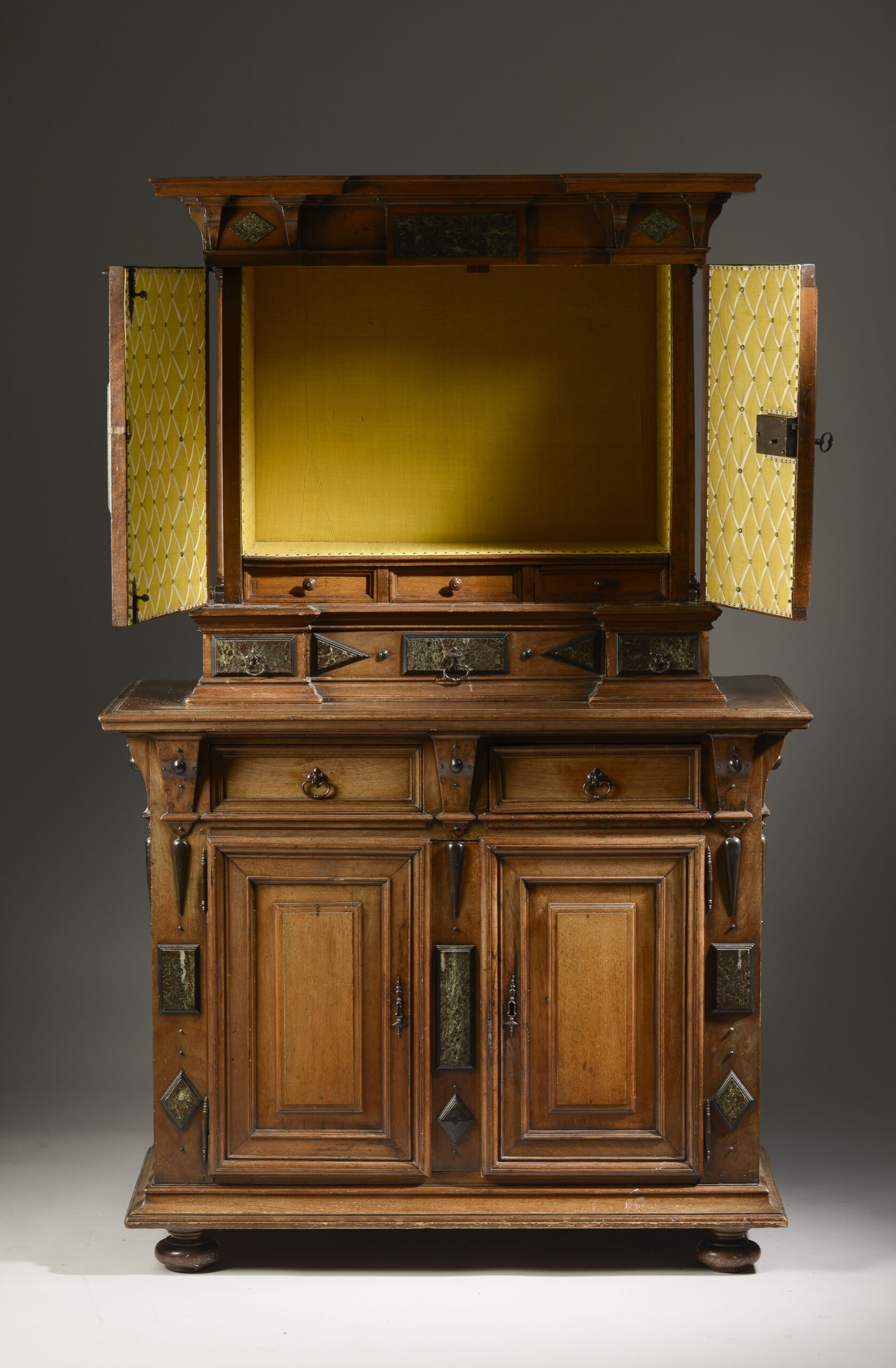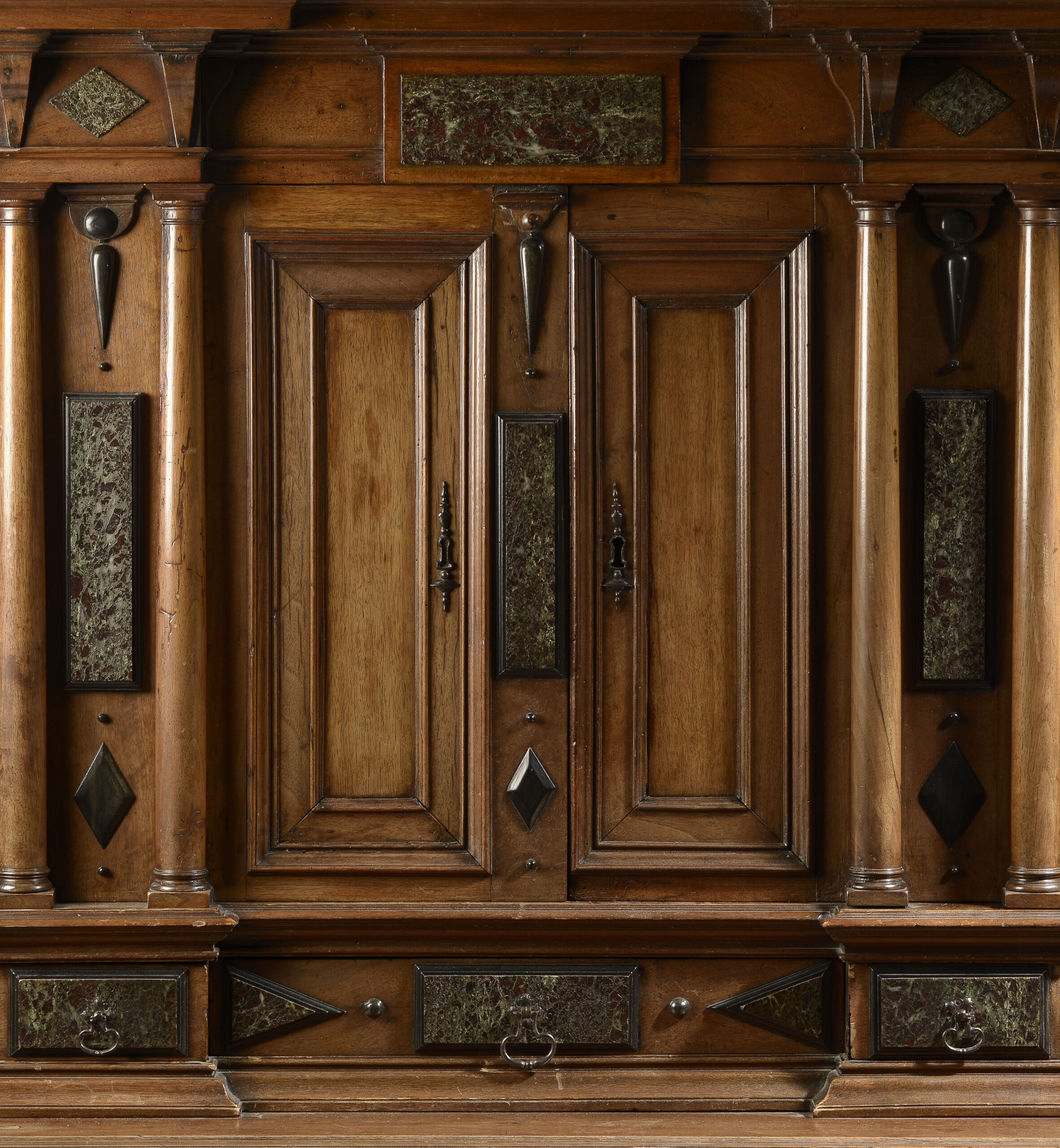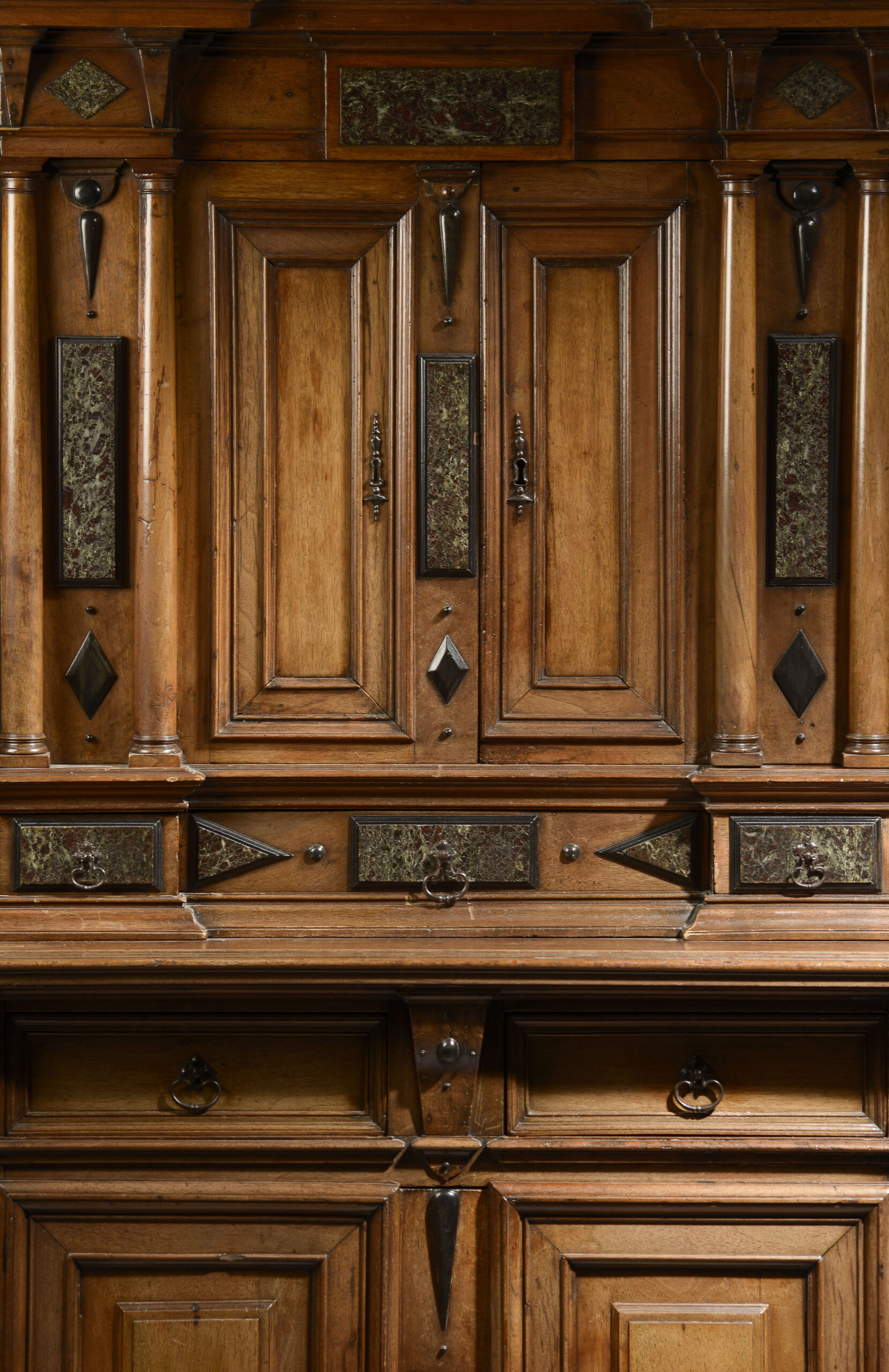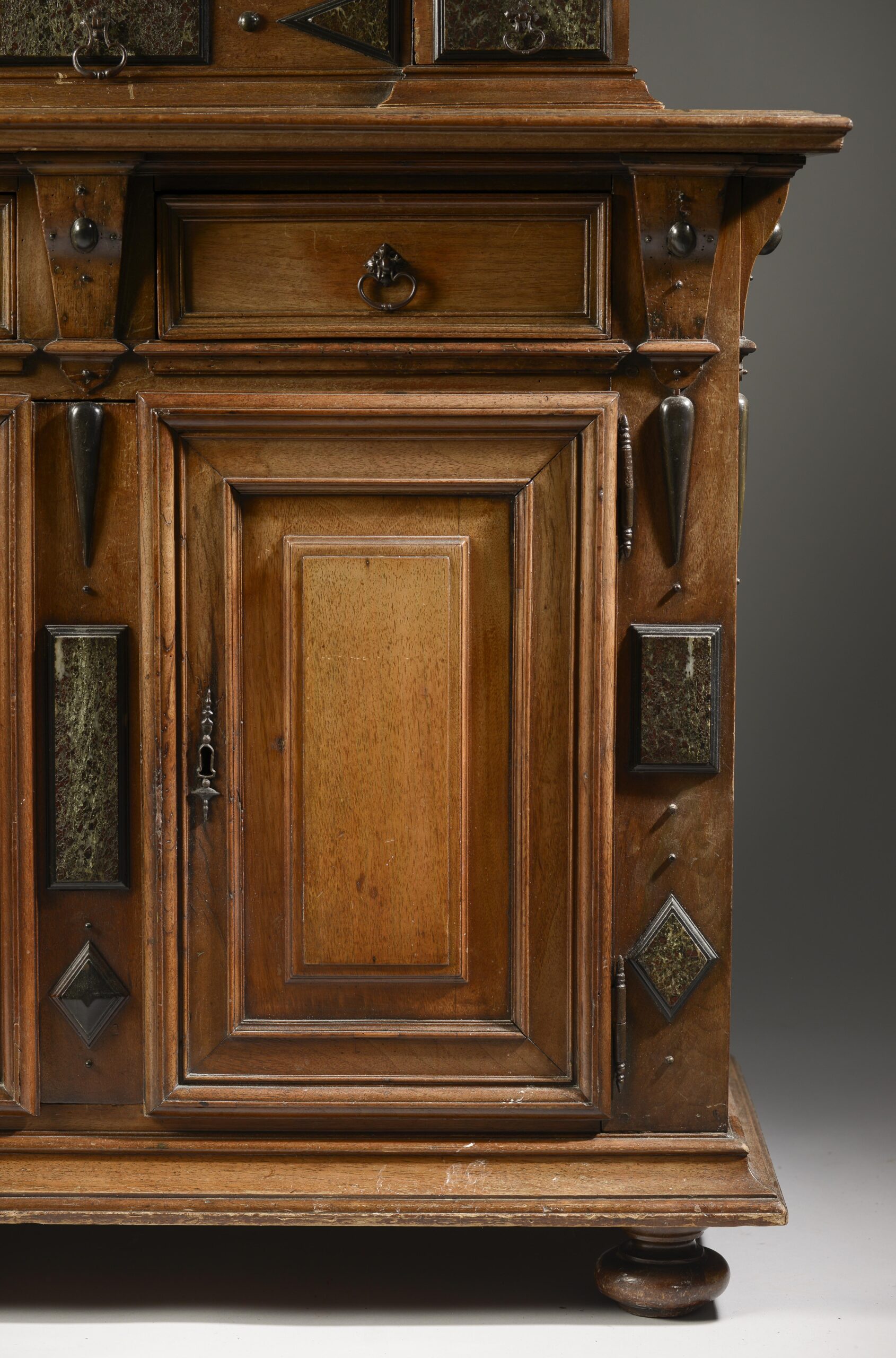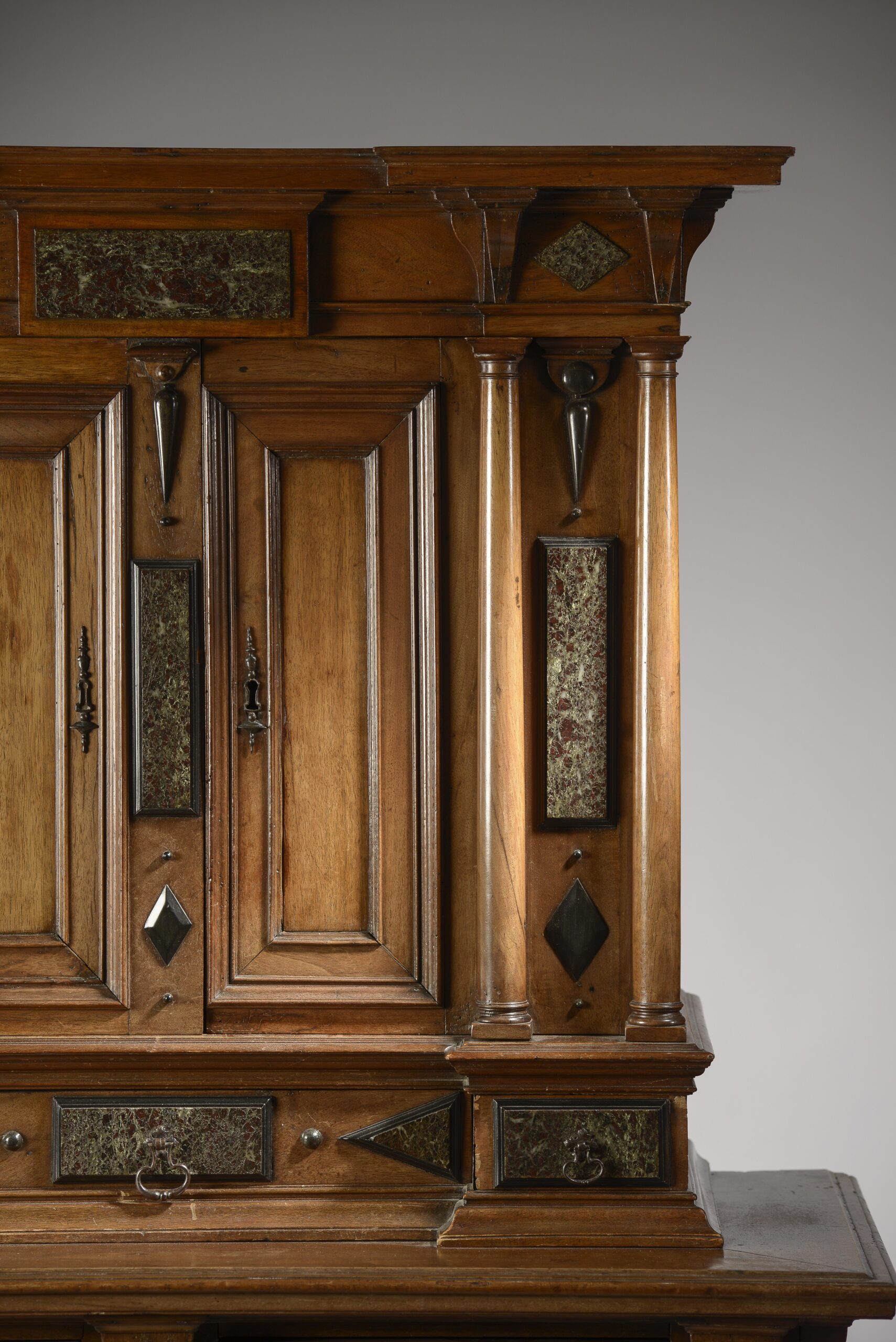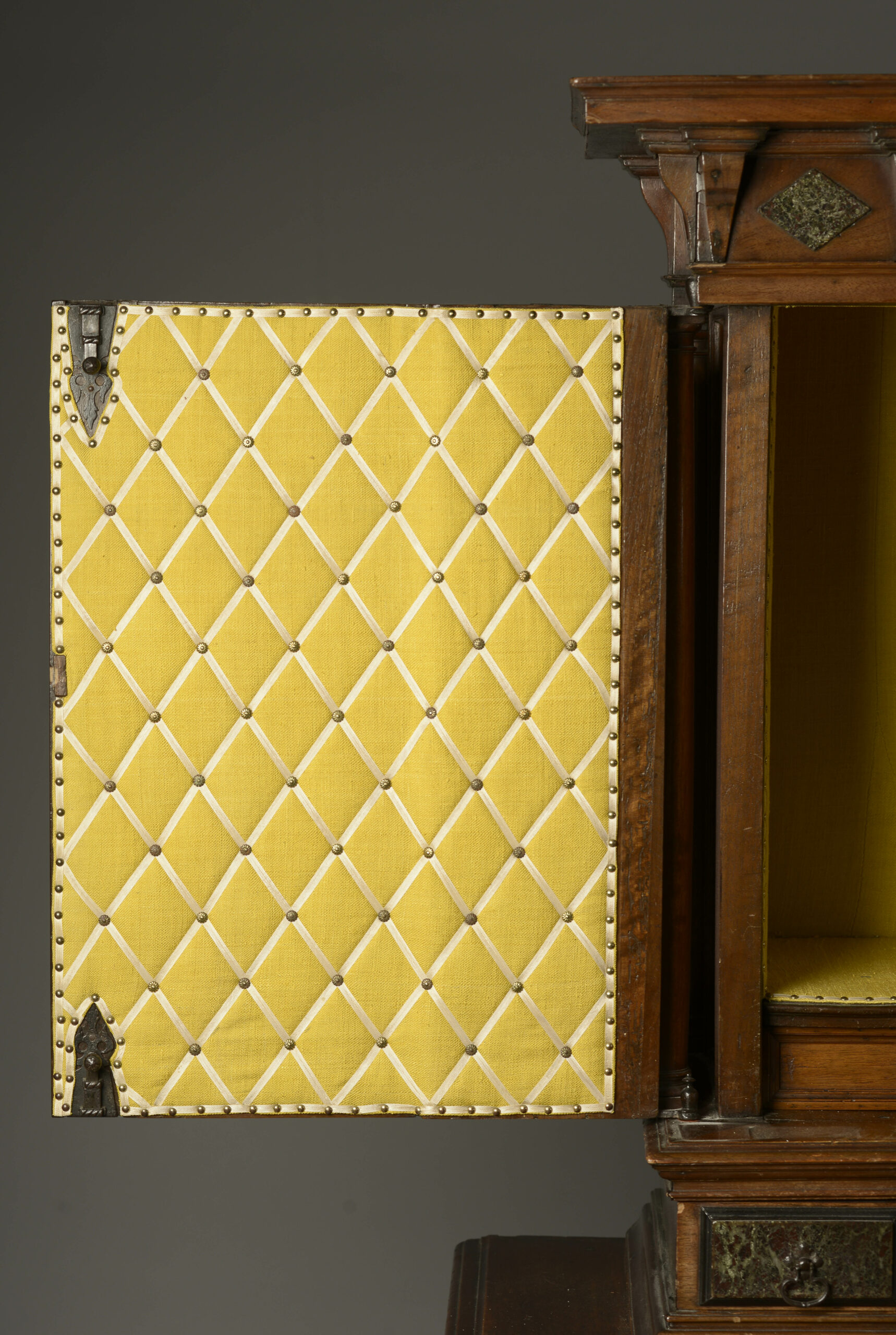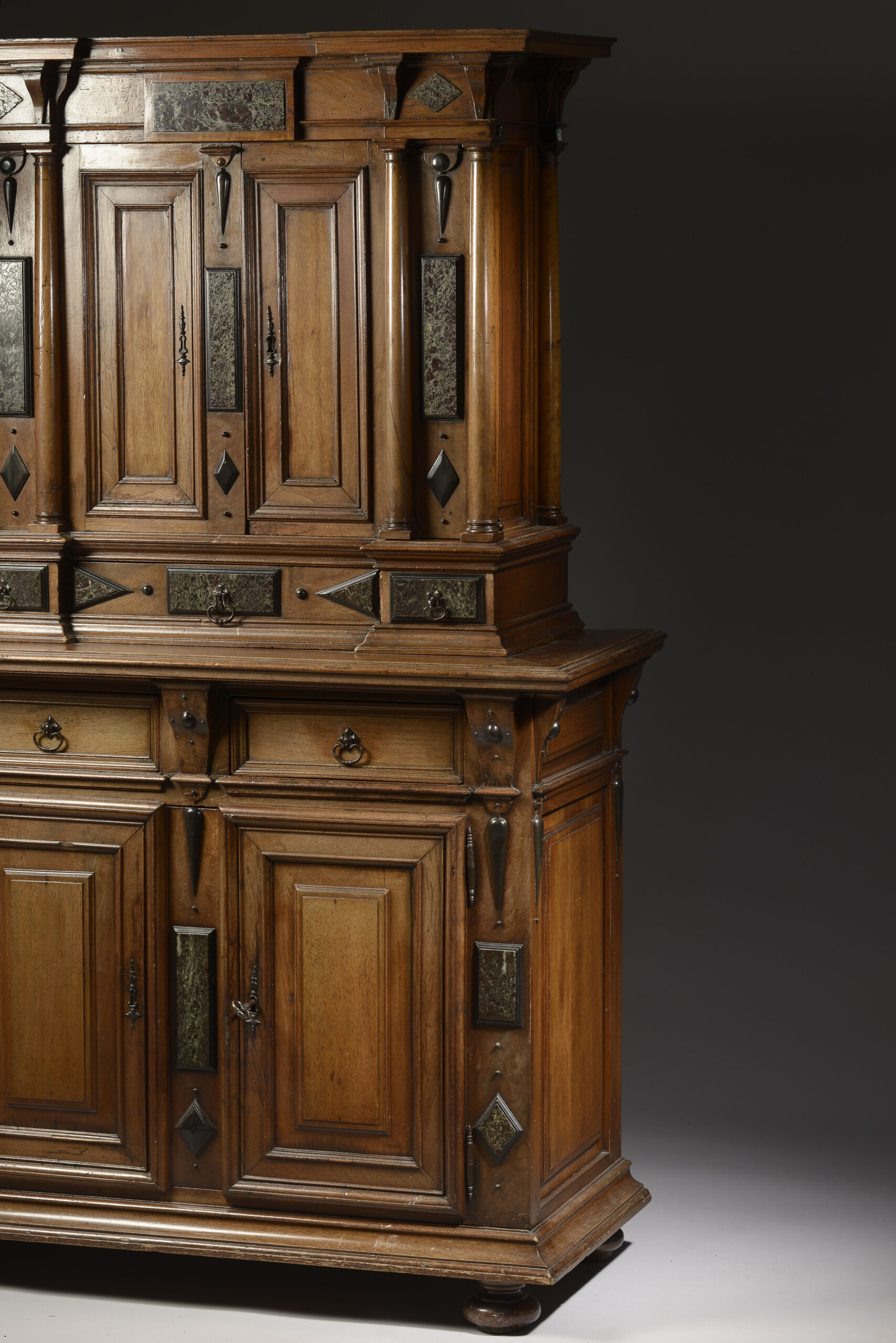Description
Thanks to Francois Ier’s blessing, France welcomed italian artists- Le Rosso around 1530, Le Primatice aroud 1532 ans the architects Serlio ans Vignole, around 1541.
Therefore, french artists got inspired by this art, which allowed a revitalization of french art.
Impacting mostly furniture’s art, shapes are evoluating inspired from the architecture of greco-romano’inspired buildings.
Those workshops are directly inspired from bellifontaine’s art. They use incrustations with marble tablets, japs or porphyry, using different geometrical shapes, sometimes associated with bas-reliefs sculpted panels.
This cabinet stands on feet looking like flattened balls. It opens with four leaves, five drawers from the front and three drawers on the inside.
The bottom part rests on a simple molded base. Each of the uprights and mantelpieces is inlaid with diamond cut marble and a rectangular table of green marble veined with white. They frame the two leaves, made up of three molded frames assembled with mitre cuts.
In between the top and the bottom parts, two drawers are separated by consoles soberly decorated with a blackened wood button and under which is also applied a long blackened wood drop.
The upper part has in its lower part, a large drawer framed by two tinier one. They all are incrustated with marble tablets, in rectangular and triangular shapes.
On those jumps are four doric colomns, with a curved and stretched fur. They frame by pairs the leaves of the upper part.
This cabinet is finished by an entablature alterning console and marble plates.
The furniture’s interior is covered with yellow silk stretched with studded braids.
This cabinet associates purity and harmony. Its purified’ structure and elegant proportions adopt all the rigor of the architecture. Its decoration of inlays of marble tables and blackened wood is, as for it of a big elegance conferring on the piece of furniture, an infinite refinement.
It makes it a really interesting and « bellifontaine » piece of art.


